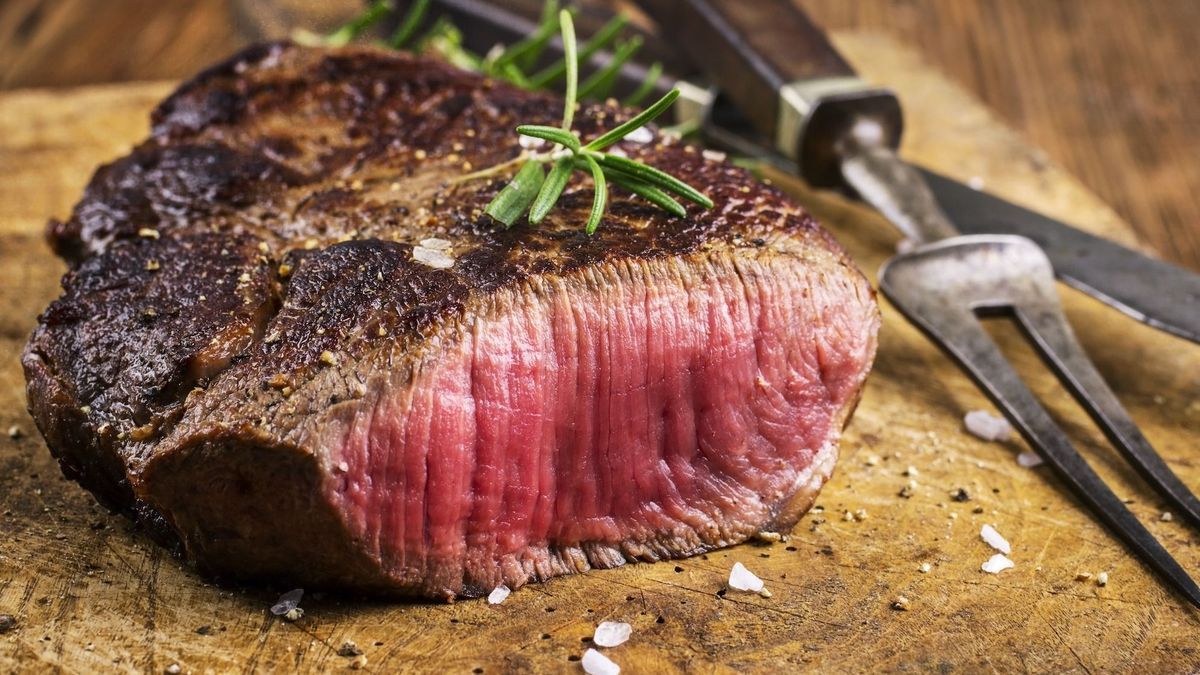
In entrecôte, in a hamburger or in minced steak, red meat can be enjoyed in many forms. But this is a meat that should not be consumed in excess, our expert reminds us. An English study has also found a way that could dissuade you from eating too much!
Reminder on the risks associated with consuming red meat
Red meat poses risks to both the environment and health. On an environmental level, if we compare it to white meat, its production requires a lot of water, and it has a much greater carbon impact. In addition, animals consume a lot of cereals to be fed.
In terms of health, red meat is rich in saturated fatty acids. Consuming it in excess can be harmful to the cardiovascular system. Nutritionist Alexandra Murcier recalls: “you should avoid excessive consumption of red meat when you have cholesterol in order to reduce your risk of cardiovascular diseases and cancers“.
“Although it is an interesting source of protein and iron, you can completely do without red meat. In fact, we can find these nutrients in other meats. There is a little more protein in red meat but not significantly“, adds Alexandra Murcier. If you value red meat, the World Health Organization recommends consuming it twice a week maximum with portions of 120 to 150 grams maximum.
A study of the eating behaviors of individuals
In the United Kingdom, scientists from the University of Durham wondered about the eating behaviors of individuals. They wanted to see if people who were aware of the risks of red meat would dissuade themselves from eating it. Indeed, these scientists start from the principle that “As warning labels have already been shown to reduce smoking as well as the consumption of sugary drinks and alcohol, using a warning label on products containing meat could help reduce consumption of red meat and its risks, if introduced as a national policy“.

These scientists then carried out an experiment: they presented different meat dishes to 1000 people. The meat option was either unlabeled or stating that eating meat contributes to “poor health,” “climate change,” or “triggering pandemics.”
Rather positive results
The results show that all labels were effective in discouraging people from choosing meals with meat. Most of them indicated that they found them anxiety-provoking, but credible. Among them, almost 10% chose a fish or vegetable option instead of meat.
Health-related labels reduced meat choices by 8.8%, climate labels by 7.4%, and pandemic labels by 10%.
According to participants’ responses, climate warning labels would be the most credible. According to Jack Hughes, author of the study and doctoral student in behavioral sciences: “Achieving carbon neutrality is a priority for the nation and the planet“.
Given the known health and environmental risks of red meat, adding warning labels to meats could be a useful and easy to implement measure.
This is not the first study to test the impact of warning messages on meat consumption. In December 2022, US researchers demonstrated that labels providing information about a product’s environmental impact can dissuade consumers from choosing carbon-rich foods, particularly red meat. A year earlier, Scandinavian researchers reached a similar conclusion, this time suggesting that knowing the environmental cost of a food product thanks to a label could push consumers to move towards more ecological alternatives.

